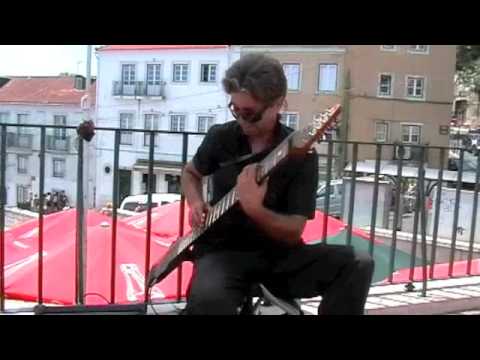Hi @Polyrism,
I can say a total ‘+1’ for everything that @Dave has just written. I too started with a broad approach (each day I drew a piece of paper from a jar that started out containing all 84 possible note & number combinations & that was my environment & root note for the session).
For me the biggest help of all, and the period of fastest progress, was taking the IFR ‘Introduction to Melodic Improvising’ workshop run by Jelske. It’s also available as a self-study video course, but I really do feel that the extra value of doing it as a workshop, with access to Jelske as a tutor & interacting with the other students was well worth the extra expense.
In the course the various environments are looked at separately (in some weeks, more than one environment).
It’s not a ‘silver bullet’ instant solution. I don’t recognise ‘environments’. I still have years of work ahead, but that’s a thing I’m looking forward to. I use the framework from the course as a loose basis for my continuing studies, not sticking with one environment for weeks but not chopping & changing randomly daily either. I give greatest prominence to 1, and a fair prominence to 6, but try to bring in others on occasions; that is after all the way it is with the majority of the music that surrounds us.
At the end of the course Jelske asked for feedback, offerering 3 questions as a possible framework. I’m happy to quote my response in full here.
> 1. Why did you join this course, what was your issue or aim or wish?
I first discovered Improvise for Real (IFR) several years ago through hearing David Reed interviewed for a podcast. Following up on that I found that the IFR view of the musical world appealed to me greatly both aesthetically and logically. At that stage I was right at the beginning of discovering my personal musicality after discovering that the ‘tone deaf’ label that had been applied to me almost 60 years ago as a child was nonsense.
That was over 2 years ago. In the meantime I’ve been starting to learn guitar, and a little keyboard, and doing ear training, all the time trying to use IFR as my view of the musical world, and considering improvisation as ‘the thing I want to do’.
However, even with the superb IFR book and raw materials, there’s only so much you can do on your own. Yes I could improvise a bit, but it didn’t feel to have any shape or direction. In particular I didn’t seem to enjoy working with backing tracks - a big drawback when working on your own (I live in a remote area)!
Jelske’s course looked to be the logical next step, a course steeped in the IFR ethos and aimed directly at what I wanted to do.
> 2. How did you experience the 12 week program?
I thought I was already familiar with IFR, but this course has supercharged that. We looked at things in a new light, and led by Jelske I experienced revelation after revelation & gained insight after insight about possibilities & approaches. I started to enjoy playing with backing tracks. I started to feel I was playing improvised melody, not just poking semi-random notes.
> 3. What did this bring you, what are you capable of doing now?
I thought I used to enjoy playing. I did used to enjoy playing. Now I enjoy it more. Along the way I’ve learnt that to ‘tell a story’ you don’t need to know where the story is going before you start. I can put on a backing track, work out the key, start playing, and feel I’m going somewhere. I can do the same with at least some of the ‘real’ music I enjoy listening to. I can just pick up my instrument and play something, unplanned, unaccompanied. I’m no prodigy. What I do is probably simple. However, what I’m playing is certainly musical, and is immensely satisfying. I look forward to working with, developing, and improving on these ideas over time. I’m still a beginner, but less so than I was. I have a very long way to go, but I’m moving along the path so much more clearly than I was 12 weeks ago.
Only you can judge if it might be of use to you.
I wish you well on your journey & look forward to hearing other responses.



 ).
).